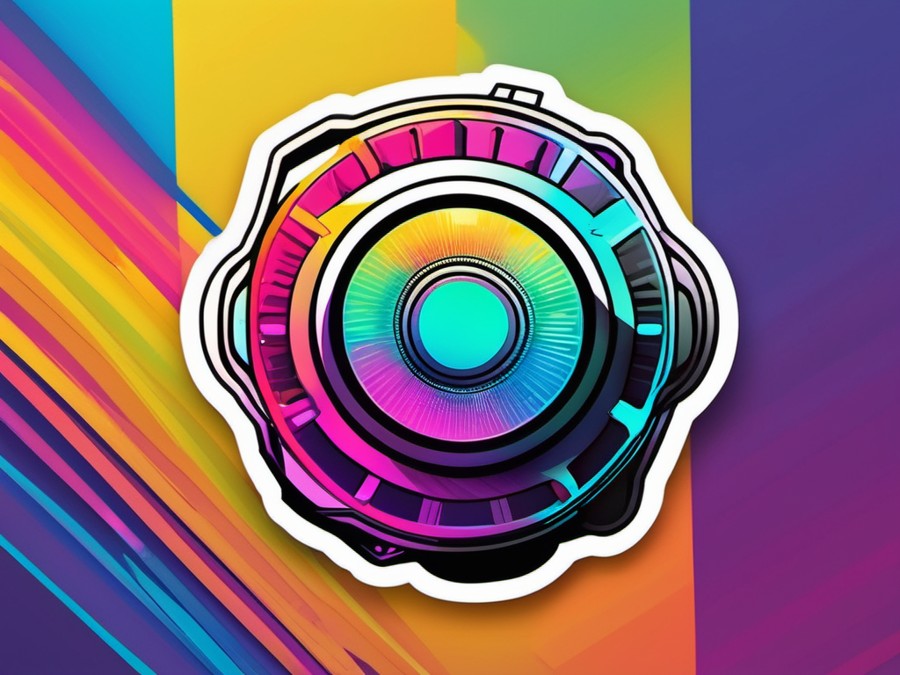· Charlotte Will · Lens Accessories · 8 min read
What is a Lens Cap and Which Type is Best for Your Camera?
Discover the importance of lens caps, types available, and how to choose the best one for your camera. Protect your investment and enhance photo quality with expert tips.

Ever wondered what that little plastic or metal cap on your camera lens is for? It might seem like a tiny detail, but the humble lens cap is actually one of the most important accessories for your camera. Today, we’re diving deep into what a lens cap is and which type is best for your specific camera.
Understanding the Basics: What is a Lens Cap?
At its core, a lens cap is a protective cover designed to shield the lens of your camera from dust, scratches, and other elements that could damage it. It’s essentially a miniature guardian for your lens, ensuring its longevity and maintaining the quality of your photos. Whether you’re a seasoned photographer or just starting out, understanding how to choose and use the right lens cap is crucial.
The Purpose of a Lens Cap
The primary purpose of a lens cap is to protect the lens when it’s not in use. This simple accessory can mean the difference between a crystal-clear image and one marred by scratches or dust. By keeping the lens covered until you’re ready to shoot, you can significantly extend its lifespan and maintain the sharpness of your photographs.
Types of Lens Caps: An Overview
Lens caps come in various types, each with its own advantages. Let’s take a look at the most common ones:
Pinch Cap (Centre-Pinch Cap)
The pinch cap is a classic design that fits snugly over the lens and secures with a centre pinch. This type is easy to use and provides good protection, but it can be a bit fiddly when you’re in a hurry to capture that perfect shot.
Snap-On Lens Cap
As the name suggests, snap-on lens caps snap into place with a simple click. They offer quick and easy protection, making them a popular choice among photographers who need to act fast. However, they might not provide the same level of security as pinch caps in high-impact situations.
Screw-In Lens Cap
Screw-in lens caps are designed for larger lenses and require a bit more effort to attach. You’ll need to screw it on and off, which can be time-consuming but offers a secure fit. This type is ideal for lenses that are more prone to damage or those used in tough environments.
Petal Lens Cap
Petal lens caps feature ‘petals’ that fold in and out, providing a more secure fit around the lens. They offer excellent protection and are often used with larger lenses or in more challenging conditions. The improved fit comes at the cost of slightly more complicated use, but many photographers find it worth the effort.
Additional Types: Rear Lens Caps and UV Filters
Beyond these common types, some cameras also use rear lens caps to protect the rear element of the lens. These are especially useful for mirrorless cameras where the sensor is exposed when the lens is detached.
UV filters are another accessory worth mentioning. While not exactly a lens cap, they serve a similar protective purpose and can be used in combination with a cap. Learn more about the role of camera lens filters in photography.
The Importance of Lens Protection in Photography
Protecting your lens is crucial for several reasons. Preventing dust and damage is the most obvious benefit, but it also enhances the longevity of your camera gear. A well-maintained lens will continue to deliver sharp, high-quality images for years to come.
Preventing Dust and Damage
Dust particles can be incredibly small, yet they have a significant impact on your photos. They can create unwanted spots or even ruin the clarity of your images. By using a lens cap, you keep dust away from the sensitive elements inside your lens.
Enhancing Longevity of Your Camera Gear
Regular use of a lens cap can extend the lifespan of your camera gear by preventing scratches and other physical damage. Whether you’re carrying your camera in a bag or just setting it down briefly, keeping the lens capped ensures that it’s protected from any accidental bumps or scrapes.
Choosing the Right Lens Cap for Your Camera
With so many types of lens caps available, how do you choose the right one for your camera? Let’s break down the key factors to consider.
Factors to Consider When Choosing a Lens Cap
Camera Type: DSLR vs Mirrorless
The type of camera you have plays a significant role in which lens cap is best. DSLRs often require larger caps, while mirrorless cameras might need something more compact. Understanding the shape and size of your camera’s lens is crucial for a good fit.
Lens Size and Compatibility
Not all lens caps are interchangeable. Make sure to check the compatibility of your cap with your specific lens model. A cap that’s too small or too large won’t provide the protection you need.
Ease of Use and Durability
Consider your own convenience and the conditions in which you’ll be using your camera. If you’re a landscape photographer who often works in windy conditions, a snap-on cap might be more practical than a pinch cap.
Common Mistakes in Choosing Lens Caps
A common mistake is choosing a cap based on looks alone. While aesthetics matter, the primary goal of a lens cap is protection. Always prioritize functionality over appearance.
Another mistake is ignoring the importance of a secure fit. A cap that doesn’t fit well can actually do more harm than good, so take the time to find one that’s a perfect match for your lens.
Real-World Examples: What Photographers Prefer
Let’s take a look at what real-world photographers prefer when it comes to lens caps.
Professional Photographers’ Favorites
Professional photographers often opt for petal lens caps due to their superior protection and secure fit. They might also use UV filters as an added layer of defense, particularly for high-value lenses.
Hobbyists and Enthusiasts’ Preferences
Hobbyists and enthusiasts tend to favor snap-on caps for their ease of use. Being quick and simple to attach, these caps are perfect for those who want to capture fleeting moments without fussing with their gear.
Special Considerations: When to Use a UV Filter
While not a replacement for a lens cap, UV filters can be a valuable addition to your camera kit.
Understanding UV Filters
UV filters are designed to block ultraviolet light, which can sometimes cause a blue cast in photos. They’re particularly useful when shooting outdoors and in bright sunlight.
When Should You Use a UV Filter?
UV filters are best used in outdoor conditions where there’s plenty of bright light. They can help reduce haziness and improve color accuracy in your photos. However, they’re not a substitute for a good lens cap and should be used in combination with one.
Caring for Your Lens Cap: Tips and Tricks
Proper care of your lens cap ensures its longevity and your camera’s protection.
Proper Storage and Maintenance
Store your lens cap carefully, preferably in a protective pouch or case. This will prevent it from getting scratched or damaged when not in use.
Regularly clean your lens cap to remove any dust or dirt that might have accumulated. A soft, damp cloth is usually sufficient for this task.
Preventing Loss: Simple Strategies
Losing your lens cap can be a frustrating experience. To prevent loss, consider:
- Attaching it to your camera strap using a lanyard.
- Keeping it in a dedicated pocket or compartment in your camera bag.
- Using a cap keeper, which is a small device that attaches to your camera and holds the cap when it’s not in use.
Conclusion: Investing in a Quality Lens Cap for Optimal Protection
Investing in the right lens cap is vital for protecting your camera gear and ensuring the quality of your photos. Whether you’re a professional or just starting out, understanding the different types of lens caps and choosing one that fits your needs is a crucial step in your photography journey.
FAQs:
What is the difference between a pinch cap and a snap-on lens cap?
A pinch cap secures with a centre pinch, offering a more secure fit but can be a bit fiddly. A snap-on lens cap, on the other hand, snaps into place with a simple click for quick and easy protection.
Can I use a UV filter instead of a lens cap?
While UV filters can provide some protection, they are not a replacement for a good lens cap. UV filters should be used in combination with a cap for optimal protection of your camera gear.
How do I clean my lens cap properly?
Clean your lens cap using a soft, damp cloth. Gently wipe away any dust or dirt that has accumulated. Avoid using harsh chemicals or abrasive materials to prevent damage.
What should I do if I lose my lens cap?
If you lose your lens cap, consider using a replacement from the same manufacturer to ensure a good fit. Alternatively, you can use a body cap or UV filter as a temporary solution until you find a suitable replacement.
Are there any disadvantages to using a lens cap?
Using a lens cap can slow down the speed at which you can take a photo, as you need to remove it before shooting. However, the protection it provides generally outweighs this minor inconvenience.
By following these guidelines and choosing the right lens cap for your camera, you can ensure that your gear stays protected and that your photographs remain sharp and clear. Happy shooting!




